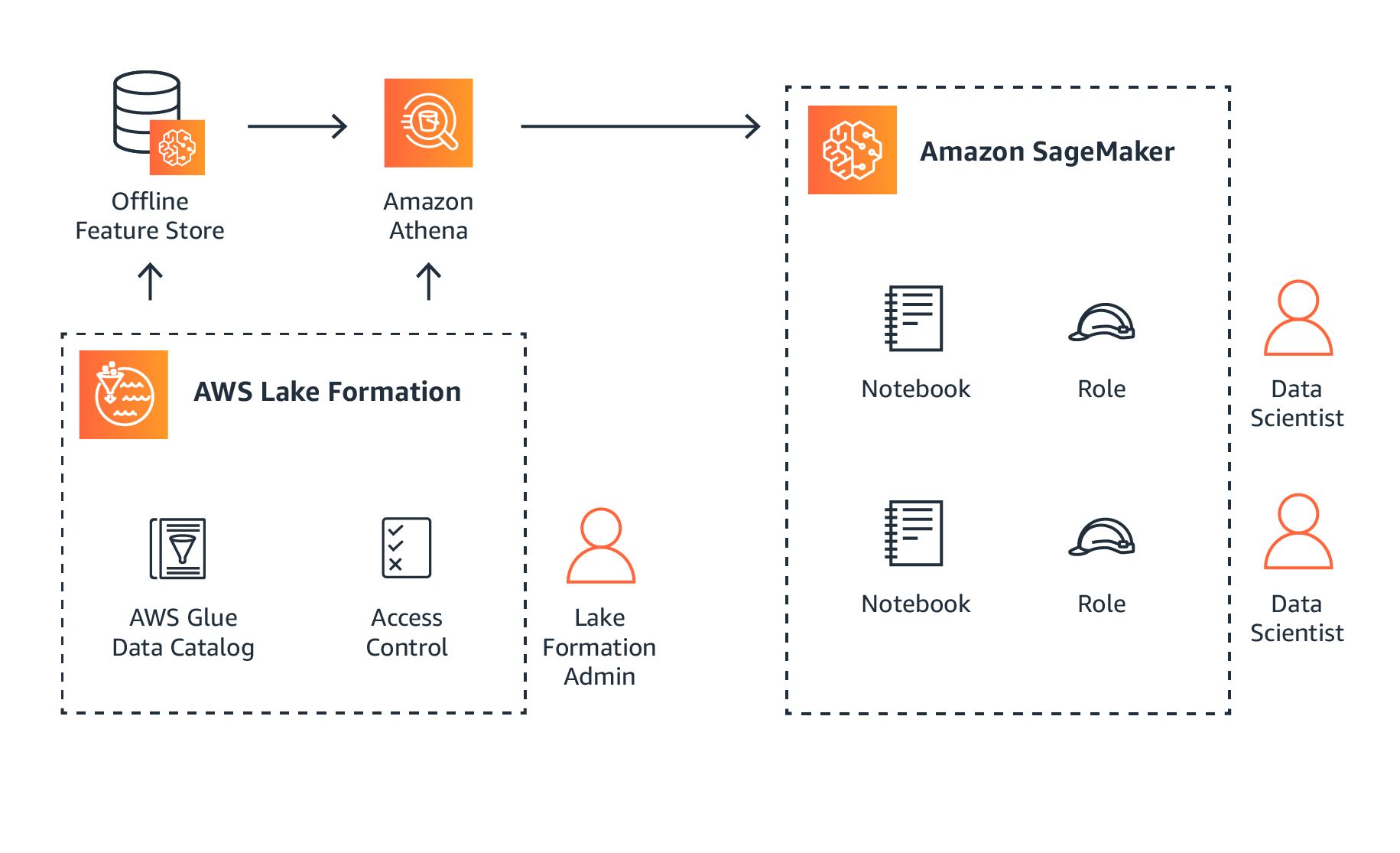Introduction
Machine learning has become an increasingly important component of the technology landscape, revolutionizing the way businesses operate and deliver services. Amazon, as one of the world’s largest and most innovative companies, has made extensive use of machine learning to enhance its operations and provide a superior customer experience. By leveraging advanced algorithms and data analysis techniques, Amazon has been able to optimize its recommendation engine, improve search results accuracy, detect fraudulent activities, enable voice assistance, optimize its supply chain, and enhance customer support.
Amazon’s commitment to machine learning can be attributed to its customer-centric approach. By leveraging the power of artificial intelligence and data analysis, Amazon is able to understand customer preferences, behaviors, and needs on a granular level. This allows the company to deliver personalized recommendations and efficient services that cater to individual customer preferences. In this article, we will explore how Amazon utilizes machine learning across various aspects of its business operations.
From its humble beginnings as an online bookstore, Amazon has evolved into a technology powerhouse that employs machine learning algorithms to analyze vast amounts of customer data. By doing so, Amazon is able to gain valuable insights into customer behavior and preferences. These insights are then used to deliver tailored recommendations, streamline search results, detect and prevent fraud, enable voice-activated assistants, optimize the supply chain, and improve customer support.
Let’s delve deeper into each of these areas to understand how Amazon leverages machine learning to continually enhance its services and maintain its position as a leader in the e-commerce industry.
Amazon’s Use of Machine Learning in Recommendations
One of Amazon’s most notable applications of machine learning is in its recommendation system. By analyzing vast amounts of customer data, including purchase history, browsing behavior, and product interactions, Amazon’s machine learning algorithms are able to generate personalized recommendations for each individual customer.
Amazon’s recommendation engine takes into account various factors such as previous purchases, items added to the shopping cart, and products viewed, to predict the most relevant and appealing products for each customer. The algorithm continuously learns and adapts based on customer feedback and preferences, ensuring that the recommendations become more accurate over time.
The use of machine learning in recommendations has significantly improved the customer experience on Amazon. By offering personalized product suggestions, customers are more likely to discover new items that align with their interests and preferences. This not only increases customer satisfaction but also drives sales and enhances customer loyalty.
Amazon’s recommendation system also plays a crucial role in cross-selling and upselling. By suggesting complementary products or premium versions of the items customers are interested in, Amazon is able to increase its average order value and revenue. The machine learning algorithms analyze patterns and purchase history to intelligently recommend items that are likely to be of interest, leading to higher conversion rates.
The recommendation system has proven to be a powerful tool for Amazon, accounting for a significant portion of the company’s revenue. Through machine learning, Amazon has been able to personalize the shopping experience for millions of customers, providing them with highly targeted and relevant product suggestions that drive engagement, satisfaction, and loyalty.
Amazon’s Use of Machine Learning in Search
Search is a critical aspect of the customer experience on Amazon, and the company has harnessed the power of machine learning to improve search accuracy and relevance. Amazon employs sophisticated algorithms that analyze a variety of factors, including customer search queries, product attributes, historical data, and user behavior, to deliver more precise search results.
Machine learning enables Amazon to understand user intent and context, allowing the search engine to provide relevant results even when the search terms are vague or ambiguous. By leveraging natural language processing and semantic analysis, Amazon’s search algorithm can interpret the meaning behind search queries and provide accurate results.
Another aspect that machine learning enhances in Amazon’s search is the ability to handle misspelled search terms. The algorithms can identify and correct common spelling errors, ensuring that customers still receive the desired results even if their search is not perfectly executed.
Machine learning also plays a role in understanding product relevancy and popularity. By analyzing customer behavior, such as click-through rates and conversion rates, the algorithm learns which products are most likely to be relevant and popular for particular search queries. This allows Amazon to highlight the most relevant and high-quality products to customers, improving the overall search experience.
Additionally, Amazon’s search algorithm leverages machine learning to employ personalization. By analyzing customer browsing and purchase history, the search engine delivers personalized results based on individual preferences and behaviors. This ensures that customers see products that are most relevant to their interests, increasing the chances of finding what they are looking for and improving customer satisfaction.
Overall, Amazon’s use of machine learning in search has significantly enhanced the accuracy, relevance, and personalization of search results. By incorporating sophisticated algorithms and analyzing various factors, Amazon can deliver a seamless and intuitive search experience, making it easier for customers to find the products they desire.
Amazon’s Use of Machine Learning in Fraud Detection
As an e-commerce giant, Amazon faces the challenge of detecting and preventing fraudulent activities on its platform. To address this issue, the company has implemented machine learning algorithms that analyze patterns, behaviors, and data points to identify potential fraudulent transactions and activities.
Amazon’s machine learning models examine a wide range of variables, including customer purchase history, payment methods, shipping addresses, and IP addresses, to flag suspicious activity and identify potential fraudsters. By continuously analyzing and learning from vast amounts of data, Amazon can detect anomalies and patterns that indicate fraudulent behavior.
One of the significant advantages of using machine learning in fraud detection is its ability to adapt and evolve over time. As fraudsters develop new techniques and strategies, the machine learning algorithms can learn from these patterns and adjust their detection methods accordingly. This adaptability helps Amazon stay ahead of fraudsters and provide a secure and trustworthy platform for its customers.
By effectively detecting and preventing fraud, Amazon not only protects its customers from financial losses but also maintains the integrity and trustworthiness of its marketplace. This is crucial for building long-term relationships with customers and fostering a safe and secure online shopping environment.
Furthermore, machine learning helps reduce false positives, ensuring that legitimate transactions are not flagged as fraudulent. Through continuous learning, the algorithms become more accurate in distinguishing between genuine and fraudulent activity, reducing the inconvenience caused to customers by mistakenly flagged transactions.
In addition to identifying potential fraud during transactions, Amazon also utilizes machine learning in post-transaction fraud detection. The algorithms analyze post-purchase behavior, return patterns, and feedback from customers to identify any suspicious activities that may indicate fraud.
Overall, Amazon’s use of machine learning in fraud detection allows the company to proactively identify and prevent fraudulent activities, providing a safer and more secure shopping experience for its customers.
Amazon’s Use of Machine Learning in Voice Assistance
With the rise of virtual assistants and smart speakers, Amazon has leveraged machine learning to develop its voice assistance technology, Alexa. Alexa is an AI-powered virtual assistant that enables users to interact with their devices and perform various tasks using natural language commands.
Machine learning plays a crucial role in the development and functionality of Alexa. Through extensive data analysis and language processing algorithms, Alexa can understand and interpret user commands, allowing for a more intuitive and seamless user experience.
Amazon’s machine learning algorithms enable Alexa to continuously learn and improve over time. Through user interactions and feedback, Alexa gets better at understanding individual preferences, accents, and speech patterns. This personalization helps Alexa provide more accurate and relevant responses to user queries, enhancing the overall user experience.
One of the key aspects of Alexa’s functionality is its ability to perform tasks and provide information through integrations with various services and applications. Machine learning allows Alexa to understand the context and intent behind user commands, enabling it to seamlessly interact with different services and provide the desired results.
Furthermore, Amazon has utilized machine learning to enable natural-language understanding and generation capabilities in Alexa. This means that Alexa can not only understand user commands but also generate meaningful and contextually appropriate responses, providing a more human-like interaction.
In addition to its core functionalities, Alexa’s machine learning capabilities enable it to perform tasks such as speech recognition, language translation, and sentiment analysis. These capabilities enhance the overall utility and versatility of Alexa, making it a powerful voice assistant that can assist users in various aspects of their daily lives.
By incorporating machine learning into its voice assistant technology, Amazon has been able to create an intuitive and intelligent virtual assistant that revolutionizes the way users interact with their devices. Alexa’s ability to understand natural language commands, learn from user interactions, and perform tasks seamlessly showcases the power of machine learning in voice assistance.
Amazon’s Use of Machine Learning in Supply Chain Optimization
As one of the world’s largest online retailers, Amazon operates a complex and efficient supply chain network to fulfill customer orders. Machine learning plays a crucial role in optimizing this supply chain, enabling Amazon to streamline processes, reduce costs, and improve overall operational efficiency.
One area where Amazon utilizes machine learning in supply chain optimization is demand forecasting. By analyzing historical sales data, customer behavior, market trends, and external factors, machine learning algorithms can accurately predict future demand for products. This allows Amazon to optimize inventory levels and stock the right quantity of products at the right time, reducing both overstocking and stockouts.
Another use of machine learning in supply chain optimization is in the area of inventory management. By analyzing data such as sales volumes, lead times, and supplier performance, algorithms can determine optimal inventory levels and reorder points for each product. This enables Amazon to maintain sufficient stock without excess carrying costs, ensuring timely and efficient order fulfillment.
In addition, machine learning helps Amazon optimize its logistics and transportation operations. By analyzing data on factors such as shipping routes, carrier performance, and transportation costs, algorithms can optimize shipping routes, schedule deliveries, and select the most cost-effective carriers. This results in reduced shipping times, lower transportation costs, and improved customer satisfaction.
Machine learning also plays a role in warehouse management. Algorithms analyze data on product dimensions, sales volumes, and order patterns to optimize warehouse layout, bin allocations, and picking paths. This reduces travel distances and improves order fulfillment efficiency within the warehouses.
Furthermore, Amazon leverages machine learning in supply chain risk management. Algorithms analyze data on external factors such as weather events, geopolitical events, and supplier performance to identify potential risks and disruptions in the supply chain. By proactively identifying and mitigating these risks, Amazon can minimize the impact on operations and ensure continuous order fulfillment.
Overall, Amazon’s use of machine learning in supply chain optimization helps the company deliver products more efficiently, reduce costs, and enhance the customer experience. By leveraging advanced algorithms and analyzing vast amounts of data, Amazon continues to optimize its supply chain operations, maintaining its position as a leader in the e-commerce industry.
Amazon’s Use of Machine Learning in Customer Support
Providing excellent customer support is a crucial aspect of Amazon’s business, and the company leverages machine learning to enhance its customer service operations. By analyzing customer data and implementing intelligent algorithms, Amazon is able to provide efficient and personalized support to millions of customers.
One key application of machine learning in customer support is in automated chatbots. These chatbots use natural language processing and machine learning algorithms to understand customer queries and provide relevant and helpful responses. By handling routine customer inquiries and providing instant responses, chatbots help reduce wait times and improve customer satisfaction. Machine learning enables chatbots to learn from customer interactions, improving their accuracy and effectiveness over time.
Another area where Amazon utilizes machine learning in customer support is in sentiment analysis. By analyzing customer feedback, reviews, and social media mentions, machine learning algorithms can identify positive or negative sentiment and gauge customer satisfaction levels. This helps Amazon proactively address any issues or concerns raised by customers, ensuring a positive experience and customer loyalty.
Machine learning also plays a role in personalized customer support. By analyzing customer interactions, purchase history, and preferences, Amazon can tailor support experiences to individual customers. This could include personalized recommendations, customized responses, and targeted offers, enhancing the overall customer support experience and fostering customer loyalty.
In addition, Amazon leverages machine learning to improve the accuracy and efficiency of its customer support ticket routing. By analyzing customer inquiries and matching them to the most suitable support agents based on skills, expertise, and historical performance, Amazon can ensure that customer issues are addressed by the most qualified agents. This leads to quicker resolution times and improved customer satisfaction.
Furthermore, Amazon uses machine learning to automate the process of issuing refunds and resolving customer disputes. By analyzing purchase history, return patterns, and customer feedback, algorithms can streamline the resolution process and make accurate decisions regarding refunds or returns, reducing manual intervention and human errors.
Overall, Amazon’s use of machine learning in customer support allows the company to provide efficient, personalized, and proactive assistance to its customers. By leveraging advanced algorithms and analyzing vast amounts of customer data, Amazon continues to enhance its support operations, ensuring a seamless and satisfactory customer experience.
Conclusion
Amazon’s extensive use of machine learning across various aspects of its operations has significantly transformed the way the company operates, delivers services, and interacts with customers. By leveraging advanced algorithms and analyzing vast amounts of data, Amazon has been able to enhance its recommendation engine, improve search accuracy, detect and prevent fraudulent activities, enable voice assistance, optimize its supply chain, and provide efficient customer support.
The application of machine learning in recommendations has allowed Amazon to personalize the shopping experience for millions of customers. By analyzing customer data and behaviors, the recommendation engine delivers highly targeted and relevant product suggestions, increasing customer satisfaction, engagement, and loyalty.
In the realm of search, machine learning has enabled Amazon’s search algorithm to provide accurate and relevant results, even with vague or misspelled search terms. This improves the overall search experience and helps customers find the products they desire more efficiently.
Amazon’s use of machine learning in fraud detection has been instrumental in protecting its customers and maintaining the integrity of its platform. By analyzing patterns, behaviors, and data points, Amazon can proactively identify and prevent fraudulent activities, providing a safe and secure shopping environment.
Voice assistance powered by machine learning has revolutionized the way users interact with their devices. Amazon’s virtual assistant, Alexa, can understand natural language commands, learn from user interactions, and perform a wide range of tasks, enhancing the overall user experience.
Machine learning has also optimized Amazon’s supply chain, allowing the company to forecast demand, manage inventory efficiently, optimize logistics operations, and mitigate supply chain risks. This ensures timely order fulfillment, reduces costs, and enhances operational efficiency.
Lastly, machine learning has improved customer support by enabling automated chatbots, sentiment analysis, personalized support experiences, and efficient ticket routing. These enhancements result in quicker response times, improved problem resolution, and overall customer satisfaction.
In conclusion, Amazon’s strategic implementation of machine learning technologies has played a pivotal role in driving innovation, enhancing customer experiences, and maintaining its position as a leader in the e-commerce industry. By utilizing the power of advanced algorithms and data analysis, Amazon continues to leverage machine learning to improve its operations and meet the ever-evolving needs and expectations of its customers.

























